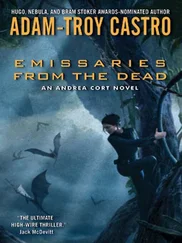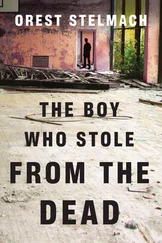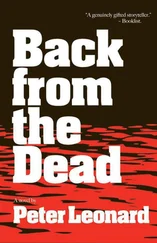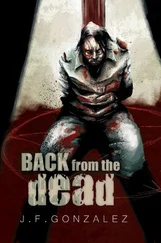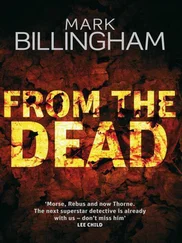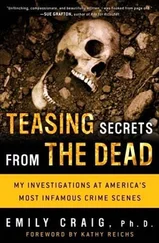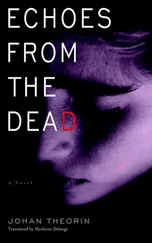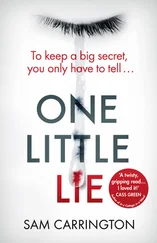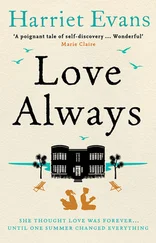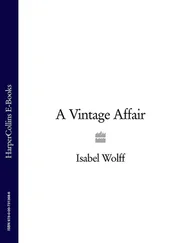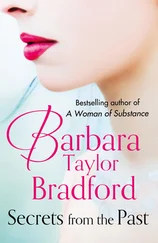That team- my team-had now made its way back to the morgue, and the previously quiet but smelly room seemed to be coming to life. I stood and watched from the sidelines as workers opened more doors into adjoining rooms. The door to the x-ray room featured the magenta trefoil-the international symbol for nuclear radiation-while a bright red light glowed above the door. “Do not enter when red light is on,” warned a large sign. Another room was set aside for the dental identification team and still another for the fingerprint specialists. At the moment, though, the whole team was milling around the cabinet near the entrance to the main suite, climbing into their protective gear.
No one had time to tell me what to do, so I kept an eye on the seasoned staff and imitated them, thrusting my arms into a heavy cotton surgical gown so that the dangling strips of cloth would tie in the back. Then I grabbed a yellow surgical mask that I also tied in back, pulling it tightly over my mouth and nose. It didn't shut out the smell, but it did reassure me that I wouldn't be inhaling any stray spatters of blood. Next, I reached into a box and pulled out a one-size-fits-all pair of paper booties, which I slipped over my sneakers like a pair of galoshes. Another box held thin paper head covers, elasticized like shower caps, so I could tuck my hair underneath.
Theresa glanced over at me and laughed. “This is like striptease in reverse.”
Her joke broke the tension, connecting us with the other workers. We all looked at one another and chuckled, and some of the bolder women began to wave their gear over their heads, doing a quick bump and grind before covering up every bit of exposed flesh. Getting a victim's blood on you was no joke. But it helped to laugh at ourselves.
I went on to don my face shield, a flat piece of thin plastic about twelve inches square, attached at the top to a layer of foam padding designed to fit gently against my forehead. I pulled a strip of elastic up over the back of my head, so that the plastic shield completely covered my face while the top circled my head like the old-fashioned stereotype of a Hollywood Indian's headband. I wished there was something I could put on to cover up the smell, but nothing I've found has ever really worked.
Last but not least came the coverings for our hands. Each of us was issued a pair of cut-proof gloves made from finely woven wire that resembled a miniature version of medieval chain-mail armor. Our supervisors warned us that broken glass and shards of metal were mixed in with the remains. Clumsy as they were, these devices would prevent injuries and the spread of infection through cuts. Thick rubber gloves went on over this armor for yet another layer of protection.
Covered from head to toe with cloth, plastic, paper, and chain mail, all we could see of each other was our eyes. We were finally ready to get down to work.
Someone snapped a few switches and all the lights came on as the huge exhaust fans roared into gear. Autopsy technicians-sometimes called “deaners” for no reason that I could ever tell-began wheeling gurneys into the room. Unlike the gurneys I'd seen in hospitals, these were asymmetrical, one end slightly higher than the other. On each gurney rode a black body bag with a large red number spray-painted on it. “MC- 23,” for example, was the twenty-third bag of remains recovered at Mount Carmel. The spray paint was an efficient-and waterproof-way to mark the bag boldly.
Each autopsy workstation was about ten feet long and three feet deep, with a large stainless steel sink flanked on both sides by elevated countertops. Each sink had three spigots connecting to a spray nozzle, a rubber hose, and a gooseneck faucet, giving us the maximum range of options for washing away the blood and gore. The whole unit rose to meet a three-foot-high backsplash equipped with lights, while the sink itself opened into the maw of a huge garbage disposal unit.
Two large steel rings in front of each sink lined up perfectly with the two large hooks at the end of each gurney. As the technicians wheeled the gurneys up to the sinks, they slipped the hooks into the rings and then used their feet to flip the locks at each of the gurney's four wheels. Now the gurney was part of our workstation. Each gurney had a two-inch hole in its lower end, sealed with a big black rubber stopper. This end now extended well over the lip of the sink, allowing us to uncork the gurney and drain fluids or rinse water down into the sink. The body bags were often simply left on the gurneys, so that we could roll them to another part of the lab without ever disturbing the remains.
Bill joined Dr. Gary Sissler, Theresa went to work with Dr. Peerwani, and I became a part of Dr. Charles Harvey's team. Dr. Harvey appeared to be in his fifties, a little shorter than I, but better nourished. He moved quickly and with purpose, immediately handing me a rectangular blue pan that looked for all the world like my own kitchen dishpan, though this one was filled with bloody remains. I immediately recognized them as pieces of burned skull mixed into a grapefruit-sized wad of baked blood and brains.
“Something just isn't right here,” Dr. Harvey said, looking over my shoulder into the pan. “We originally thought all these people died from the fire. But this woman doesn't seem to have been burned all that badly. Her body was relatively intact and there was no soot in her airway.”
I nodded. Usually, fire victims die from a rapid buildup of carbon monoxide while choking on the smoke. But this one had died before she'd had a chance to inhale anything harmful. Why?
“There's another thing,” Dr. Harvey went on. “Investigators didn't see any evidence that any building debris had fallen on top of her-and yet her skull was in pieces. If it didn't get smashed in the crash or burned by the fire, what broke it?”
I looked down uncertainly at the charred remains. They held a secret that I had suddenly become responsible for discovering.
“I'll be anxious to see what you can do with this,” Dr. Harvey said brusquely, and he went quickly back to his own new victim.
I stood uncertainly for a moment in the midst of the morgue traffic. Everyone seemed to be moving purposefully to his or her assigned task, but where was I supposed to work? Dr. Harvey's autopsy area was already filled to capacity with technicians, and stacks of instruments covered every horizontal surface. Finally I took the bucket over to a somewhat isolated white porcelain sink tucked into one corner of the morgue, checking to make sure it wasn't a “clean” sink-one of those closely guarded by safety watchdogs and reserved for hand-washing-before gingerly lifting out some of the pieces. I'd done this before, but never in this lab, surrounded with strangers, burdened by the knowledge that I was now part of a history-making event. I took a deep breath, forcing my mind to focus on the evidence I held and, as so often happens, my hands took on a life of their own, moving instinctively to tease the bone away from the brain.
It was the bones that caught my interest. The brain and other soft tissue had been essentially destroyed by the fire and the past week's process of decomposition. But the sturdy bones held secrets that I might decipher if I could just get the “squishy stuff” out of the way.
It was simple at first to grasp the largest pieces of the broken skull and pull them away from what was left of the brain. After I had scraped away the last of the baked blood and soft tissue from these large pieces, I washed them in a pan of hot soapy water, then set them aside on a blue towel to dry. The whole process was a little like doing the dishes after a particularly messy meal.
My goal was to reassemble the skull-only then could I read the story of the young woman's death-but in order to recover every single bone fragment, I had to pull the brain apart piece by piece, as if I were breaking off chunks of bread dough, my double-gloved fingers carefully probing the bloody tissue, seeking the bits of bone that were embedded within. As I extracted and then washed the smaller pieces, blood and dirty water splashed onto my chest and face shield and, to make matters worse, the occasional fly would land on me and crawl around. I soon discovered that if I tried to flick off the insect with my messy rubber gloves, I would spread more blood and gore to the spot where, before, only a little fly had left its tracks. So I did my best to ignore the flies and blood spatter that now covered not only my body but my face shield as well, a pockmarked pattern of black and red that left me feeling like I was looking through an insect-spattered windshield-without the wipers.
Читать дальше

